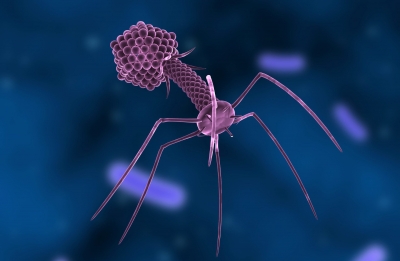
Bacteriophage, also called phage or bacterial virus, any of a group of viruses that infect bacteria. Bacteriophages were discovered independently by Frederick W. Twort in Great Britain (1915) and Félix d’Hérelle in France (1917). D’Hérelle coined the term bacteriophage, meaning “bacteria eater,” to describe the agent’s bacteriocidal ability. Bacteriophages also infect the single-celled prokaryotic organisms known as archaea.
During infection a phage attaches to a bacterium and inserts its genetic material into the cell. After that a phage usually follows one of two life cycles, lytic (virulent) or lysogenic (temperate). Lytic phages take over the machinery of the cell to make phage components. They then destroy, or lyse, the cell, releasing new phage particles. Lysogenic phages incorporate their nucleic acid into the chromosome of the host cell and replicate with it as a unit without destroying the cell. Under certain conditions lysogenic phages can be induced to follow a lytic cycle.
Other life cycles, including pseudolysogeny and chronic infection, also exist. In pseudolysogeny a bacteriophage enters a cell but neither co-opts cell-replication machinery nor integrates stably into the host genome. Pseudolysogeny occurs when a host cell encounters unfavourable growth conditions and appears to play an important role in phage survival by enabling the preservation of the phage genome until host growth conditions have become advantageous again. In chronic infection new phage particles are produced continuously over long periods of time but without apparent cell killing.
Credit : Britannica
Picture Credit : Google




